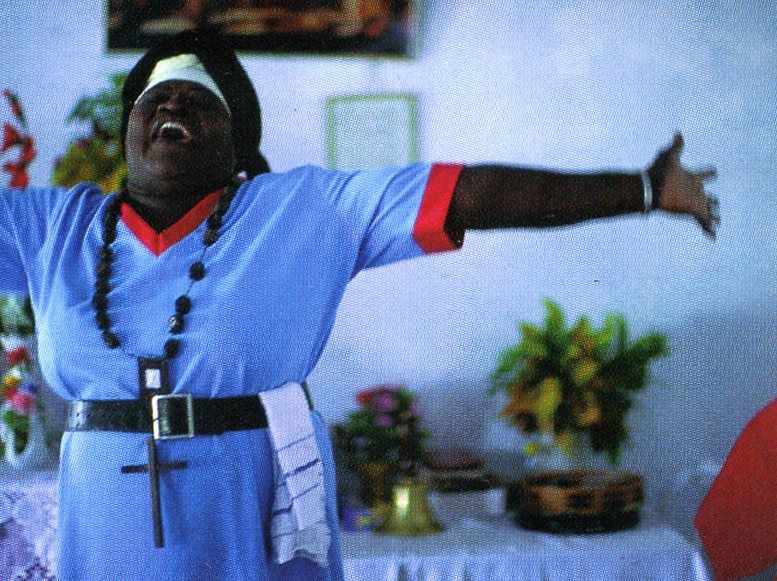Move Over, Meditation
Lifting the Taboo on Heightened Emotion
What if, instead of seeking inner peace, a calm mind, and a relaxed body, you experimented with the opposite: lighting an inner fire, awakening higher emotion, and making soulful commotion? What if instead of mindfulness practice, you tinkered with catching a wave of deep, sacred feeling?
There may be no real dichotomy between mind and body or thoughts and emotions, but there is a difference between spiritual practices primarily designed to manage the mind and those which aim to set the heart aflame. We live in a time when stillness, mindfulness, tame talk, and cool composure are overemphasized at the expense of shaking bodies, singing voices, untamed expression, and ecstatic emotion. Now is the moment to meet and greet the spiritual heat.
Introducing the Spiritual Thermometer
The most important conceptual tool offered by Sacred Ecstatics is what we call a spiritual thermometer. It gauges the degree of spiritually inspired emotion circulating inside you and in the room. The hotter the spiritual temperature, the closer you feel to the numinous source of creation and the more deeply touched and moved you are by its penetrating joy.
The spiritual thermometer allows us to discern experiential differences in spiritual practices without getting lost debating beliefs or other abstractions. No matter what tradition you follow, Sacred Ecstatics invites you to take your spiritual temperature: Are you emotionally distant from ineffable mystery and cooled off by lifeless practice and soulless expression, or are you ecstatically singing and dancing with heartfelt bliss?
All spiritual experience takes place along a temperature gradient that ranges from freezing cold to sizzling hot—thermodynamics that are more felt than understood. There is a time and place for cooler temperatures that include contemplation, conversation, deep concentration, and efforts that sharpen the mind. At the colder end of the thermometer, the naming and framing mind reigns. Here you find yourself in a continuous effort to mentally focus, conceptually settle, and yet dialogically unsettle mind’s rigidities and dualisms. This is where the meditation-focused traditions are found whose primary aim is to discipline the mind in order to awaken to the boundlessness of reality.
Ecstatic traditions, however, most highly value an ongoing reentry into the central hearth of the “big room” where a spiritual fire clears out a cluttered head, sets free a stuck body, and opens wide a loving heart. Both cold and hot spiritual ways value the vast infinity hosting life—the main difference is the meditator peripherally observes it while the ecstatic jumps into its fire.

Sacred Emotion: The Last Taboo
It’s widely acceptable to talk about love, compassion, agape, and so on, but most people are embarrassed and even horrified by the very idea of accentuating spiritual emotion and its natural somatic expression, fearful of losing composure and control.
We have also found over the years that even people who value letting the body be free are actually timid and uncomfortable about surrendering to heartfelt emotion of the religious kind. Here the major religions and many “spiritual but not religious” folks are more alike than different with their shared fear, diminishment, disqualification, and dismissal of sacred emotion, especially feelings of extreme joy that inspire spontaneous somatic expression. It’s easy to embrace the idea of heightened emotion, but when people first witness its expression many find it is outside their preferred climate zone.

Nothing agitates the status quo like a blissful outbreak of high emotion. Buddhists, Christians, Jews, Hindus, Muslims, and New Thought practitioners, among others—with exceptions provided by heretics and outcasts—all suggest to varying extents that a primary goal of spirituality is to achieve mastery over the emotions and dampen body excitement.
Despite their doctrinal diversity, among world religions there is a ubiquitous underlying premise that heightened emotion and somatic excitation obstruct access to an elevated spiritual state—a placid, equanimous higher consciousness held in a still or controlled body. Sacred ecstasy, the felt experience of being close to divinity, is very often ignored, feared, banned, or simply forgotten in favor of elevating the mind as the only tool capable of liberating the mind and controlling or transcending the body’s emotion and motion.
The mind’s quest to liberate itself from itself is claimed to bring the highest mentally held realization, something that has little emotional expression or body kinetics involved. The Dalai Lama, for example, in conversation with a group of scientists and psychologists, argues that the highest spiritual development is the ability to cultivate mental discipline to free oneself from “negative emotions.”* Mental discipline has value, but there is a whole wide spectrum of spiritual experience missing from the Dalai Lama’s approach. Psychology and Tibetan Buddhism generally operate at the same cool spiritual temperature, so it is not surprising that both traditions would feel a kinship with one another.
Unfortunately, the focus on disciplining the mind in order to manage or overcome troubling emotions has resulted in missing an alternative and historically tried-and-true approach: the use of emotionally inspiring music, rhythm, and free body movement to ecstatically transform one’s whole condition. Rather than always remain in a cold spiritual temperature where mindful means prevail, move to the spiritual fire where ecstatic means utilize rather than pathologize the arrival of unpleasant feelings. Contrast the Dalai Lama’s approach to emotion with that of Bushman healer, /Kunta Boo:
The same power that changes a person’s emotion from love to anger can also change the anger back to love. To keep healthy, healers must help the feelings keep changing. Everyone will feel angry from time to time, but a problem rises when it stays stuck. We get sick when we stay stuck in these dirty feelings. We shake to help those things move. All the different feelings are in a circle that must keep going round and round. (Personal communication with Bradford Keeney 2000, emphasis ours).**

Excluding emotion and dismissing other natural somatic ways of being in the world, traditions that lack ecstatic thermodynamic know-how end up promoting practices that go against the grain of how we are physically and spiritually built. Rather than attempt to envision high mystery with a clear (i.e., cleared of body) mind, plunge inside it with all of your sensory-motor operations at full throttle and maximal excitation.
The mind, which is not separate from the body, will spontaneously fall in line when the spiritual temperature is high enough to melt any fabricated divide. What almost all religions miss, lose, forget, erase, or censure is that your body cannot not move, not sense, and not emote. Trying to cease or “transcend” these natural operations cultivates an unnecessary ready-to-be-heady disembodiment that misses the full spectrum of mystical experience.
Stuck on Paper
The difference between the hot and cold temperature zones is illustrated by the experience of a Christian missionary in Namibia who handed some Bushman elders a Bible and said, “You can find God inside this book.” They were puzzled and after opening its pages replied, “Why is your God black and white and stuck on paper?” To the Bushmen, God dances and sings to spiritually cook them and is not frozen into static words.
The alternative is to leave the spiritually cold name game of a textually overfed mind behind and let your heart lead with a precious kind of emotion. When the spiritual temperature is high enough, your communication shifts to the universal language of music, the surest means of expressing higher emotion. Song best conveys infinite divine love with its widespread grace, absolute forgiveness, and unconditional sharing.
A close and intimate encounter with the source of all creation bankrupts your desire to argue over what to name it and whether to claim, exclaim, or defame it. As Rumi proposes, “Close the language-door, and open the love-window.” When you must use words to speak of the sacred, reach for the poetry rather than the taxonomy. Poem and song reveal rather than conceal the ubiquity of divinity. Elizabeth Barrett Browning writes in her poem, Aurora Leigh:
Earth’s crammed with heaven,
And every common bush afire with God: But only he who sees takes off his shoes.
-The Keeneys February 11, 2019. Excerpted and adapted from the forthcoming second edition of Sacred Ecstatics: The Recipe for Setting Your Soul on Fire.
*Lama, Dalai. 2003. Destructive Emotions: How Can We Overcome Them? New York: Bantam Dell.
**For more on Kalahari Bushman religion, see our book, Way of the Bushman.
